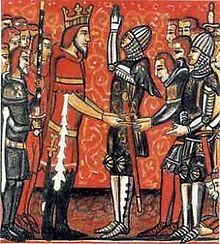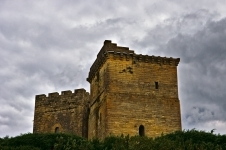VIKINGS
HUNGARIANS
SARACENS
GAME
PLAY
PPP
http://es.slideshare.net/davidpuly/second-invasions
The New Invasions
During the ninth and tenth centuries the remnants of Charlemagne's empire
were also battered by new waves of invaders. Scandinavians attacked from the
north, Muslims from the south, and a new wave of Asiatic nomads, the Magyars,
conducted a series of destructive raids on central Europe and northern Italy.
Christian Europe had to fight for its life against these aggressive and
warlike newcomers, who did far more damage to life and property than the
Germanic invaders of the fifth century.
From bases in North Africa, Muslim adventurers in full command of the sea
plundered the coasts of Italy and France. In 827 they began the conquest of
Byzantine Sicily and southern Italy. From forts erected in southern France
they penetrated far inland to attack the caravans of merchants in the Alpine
passes. What trade still existed between Byzantium and western Europe, except
for that undertaken by Venice and one or two other Italian towns, was now
almost totally cut off, and the Mediterranean Sea became a virtual Muslim
lake.
The most widespread and destructive raids came from Scandinavia. During
the ninth and tenth centuries Swedes, Danes, and Norwegians - collectively
known as Vikings - began to move south from their remote forests and fiords.
The reason for this expansion is not clear, but some historians cite
overpopulation and a surplus of young men as causes. Other scholars view these
raiders as defeated war bands expelled from their homeland by the gradual
emergence of strong royal power. Still others see a clue in the fact that the
Vikings had developed seaworthy ships capable of carrying a hundred men and
powered by long oars or by sail when the wind was favorable. Viking sailors
also had developed expert sailing techniques; without benefit of the compass,
they were able to navigate by means of the stars at night and the sun during
the day.
The range of Viking expansion was impressive. The Vikings explored as far
as North America to the west, the Caspian Sea to the east, and the
Mediterranean to the south. Few areas seemed immune from their raids, which
filled civilized Europeans with a fear that was reflected in a new prayer in
the litany of the church: "From the fury of the Northmen, O Lord deliver us."
Three main routes of Viking expansion can be identified. The outer path,
which was followed principally by the Norwegians, swung westward to Ireland
and the coast of Scotland. Between 800 and 850 Ireland was ravaged severely.
Many monasteries, the centers of the flourishing Irish Celtic culture, were
destroyed. By 875 the Norwegians were beginning to occupy remote Iceland, and
it was here rather than in their homeland that the magnificent Norse sagas
were preserved, little affected by either classical or Christian influences.
During the tenth century the Icelandic Norsemen ventured on to Greenland and,
later, to North America.
Another route, the eastern line, was followed chiefly by the Swedes, who
went down the rivers of Russia as merchants and soldiers of fortune and, as
was described in chapter 7, founded the nucleus of a Russian state.
The Danes took the middle passage, raiding Britain and the shores of
Germany, France, and Spain. By the 870s they had occupied most of Britain
north of the Thames. Also in the middle of the ninth century their raids
increased upon the Continent, where their long boats sailed up the Rhine,
Scheldt, Seine, and Loire rivers. In particular the Danes devastated northwest
France, destroying dozens of abbeys and towns. Unable to fight off the Viking
attacks, the weak Carolingian king Charles the Simple arranged a treaty with
Rollo, a Norse chieftain, in 911. This agreement created a Viking buffer
state, later called Normandy, and recognized Rollo as duke and vassal of the
French king. Like Viking settlers elsewhere, these Northmen, or Normans, soon
adopted Christian civilization. By the eleventh century, Normandy was a
powerful duchy, and the Viking spirit of the Normans contributed in producing
the most vigorous crusaders, conquerors, and administrators in Europe.
Europe in 900
Europe's response to the invasions of the ninth and tenth centuries was
not uniform. By 900, the Viking occupation of England initiated a strong
national reaction, which soon led to the creation of a united British kingdom.
Similarly, Germany in 919 reacted to the Magyar threat by installing the first
of a new and able line of kings who went on to become the most powerful
European monarchs since Charlemagne.
The Viking attacks on France accelerated the trend toward political
fragmentation that began under the Merovingians but was temporarily halted by
the strong personal leadership provided by the Carolingians. When
Charlemange's weak successors were unable to cope with constant Viking
assaults, and the government could not hold together its vast territory
without either a bureaucracy or a dominating king, the result was that small
independent landowners surrendered both their lands and their personal
freedoms to the many counts, dukes, and other local lords in return for
protection and security. The decline of trade further strengthened the
position of the landed nobility, whose large estates, or manors, tended to
become economically self-sufficient. In addition, the nobility became
increasingly dependent on military service rendered by a professional force of
heavily armed mounted knights, many of whom still lived in the house of their
noble retainers in return for their military service.
In response to all these elements - the disintegration of central power,
the need for protection, the decrease in the number of freemen, the rise of a
largely independent landed aristocracy, and the increased reliance on the
mounted knight - patterns of society took shape.



















































